As we look towards 2024, the realm of bathroom design is poised to embrace transformative trends that redefine both functionality and aesthetics. This evolution reflects a blend of technological innovation, environmental consciousness, and a deepening appreciation for personal wellness and luxury. These emerging trends are not just about style; they symbolize a broader cultural shift towards more personalized, sustainable, and tech-savvy living spaces.
Eco-Conscious and Sustainable Design
- In recent years, there has been a growing trend towards eco-conscious and sustainable bathroom designs, a reflection of the increasing awareness and commitment to environmental responsibility. This shift is not just about using green materials; it's a holistic approach that encompasses efficient use of resources, minimizing waste, and creating healthier living spaces.
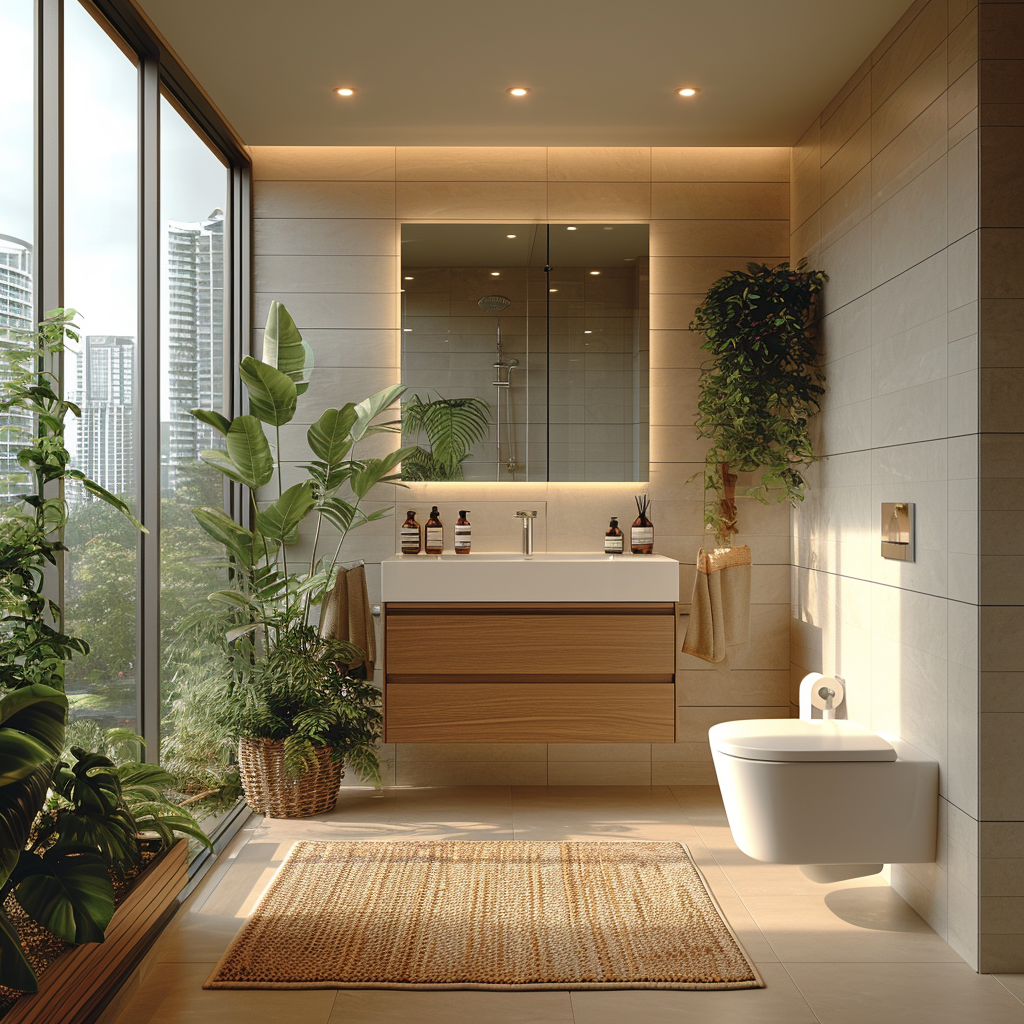
- One of the most significant aspects of sustainable bathroom design is water conservation. Innovations like low-flow toilets, showerheads, and faucets have become increasingly popular. These fixtures significantly reduce water usage without compromising performance, aligning with the global efforts to conserve this precious resource. Moreover, the use of greywater systems, which recycle water from sinks and showers for use in toilet flushing or garden irrigation, further emphasizes the commitment to sustainability.
- Material choices also play a crucial role in eco-friendly bathroom designs. Recycled glass, reclaimed wood, and natural stone are popular choices, offering both durability and aesthetic appeal. These materials not only reduce the environmental impact by minimizing the demand for new resources but also add a unique, earthy character to the bathroom space.
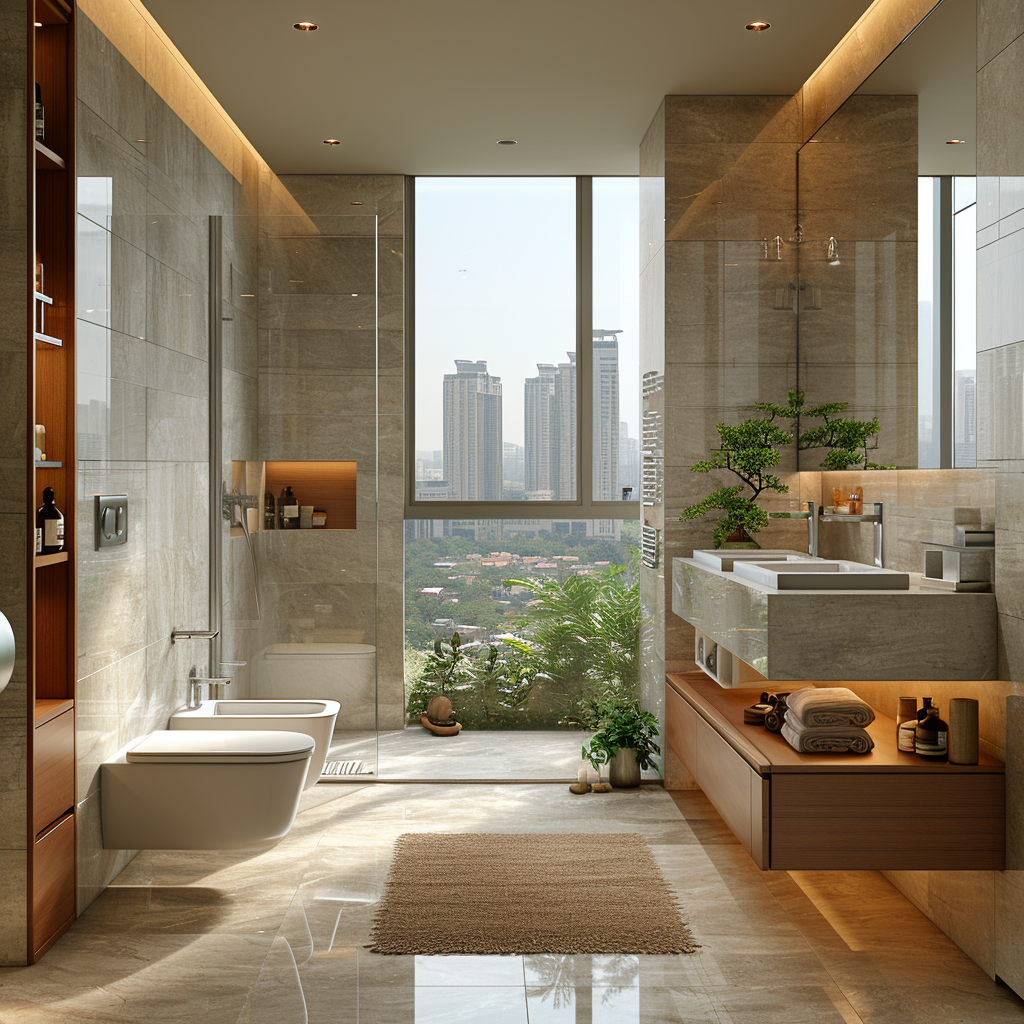
- Energy efficiency is another critical element. LED lighting, which consumes a fraction of the energy of traditional bulbs, is becoming standard in eco-conscious bathroom designs. Additionally, more homeowners are opting for skylights and larger windows to maximize natural light, reducing the need for artificial lighting and enhancing the room's ambiance.
- Indoor air quality is a lesser-discussed but equally important aspect of sustainable bathroom design. The use of low-VOC (volatile organic compounds) paints and finishes, as well as proper ventilation systems, ensures a healthier environment, free from harmful chemicals and moisture build-up, which can lead to mold.

- Overall, the rising trend in eco-conscious and sustainable bathroom designs is a testament to the evolving values of homeowners and designers alike. It's a movement that not only respects the planet but also creates spaces that are beautiful, functional, and good for our well-being. This approach is not just a fleeting trend; it's a necessary shift towards a more sustainable future.
Spa-Like Experiences at Home
- The trend of transforming bathrooms into personal, spa-like retreats is a testament to our growing desire for spaces that offer not just functionality but also relaxation and rejuvenation. In today's fast-paced world, the bathroom has evolved from a purely utilitarian space to a personal sanctuary, a haven for de-stressing and indulging in self-care. This trend, gaining momentum in interior design circles, is about creating an environment that provides a spa-like experience within the comfort of one's home.

- Central to this trend is the concept of the bathroom as a space for relaxation and pampering. Luxurious bathtubs, often freestanding and sculptural, serve as the centerpiece. They are complemented by features like built-in aromatherapy systems, chromotherapy lighting, and advanced water jets that mimic a massage-like experience. Walk-in showers with rainfall showerheads and multiple sprayers add to this luxurious atmosphere, offering a sensory experience akin to a natural rainforest.
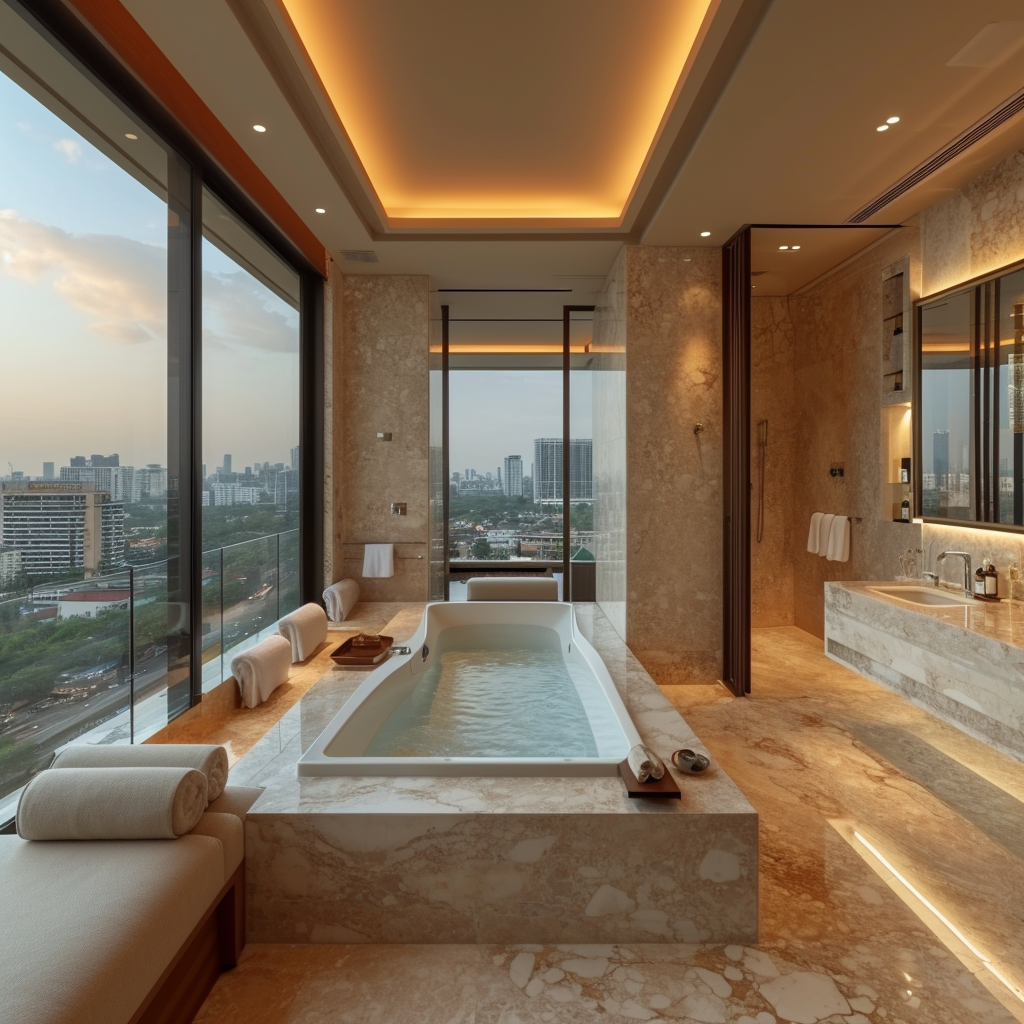
- The use of natural materials and colors plays a significant role in these spa-like bathrooms. Stone, wood, and neutral color palettes create a serene and earthy ambiance, evoking the tranquil environment of high-end spas. This is often enhanced with natural light, either through large windows or skylights, fostering a connection with the outside world and reinforcing a sense of calm.
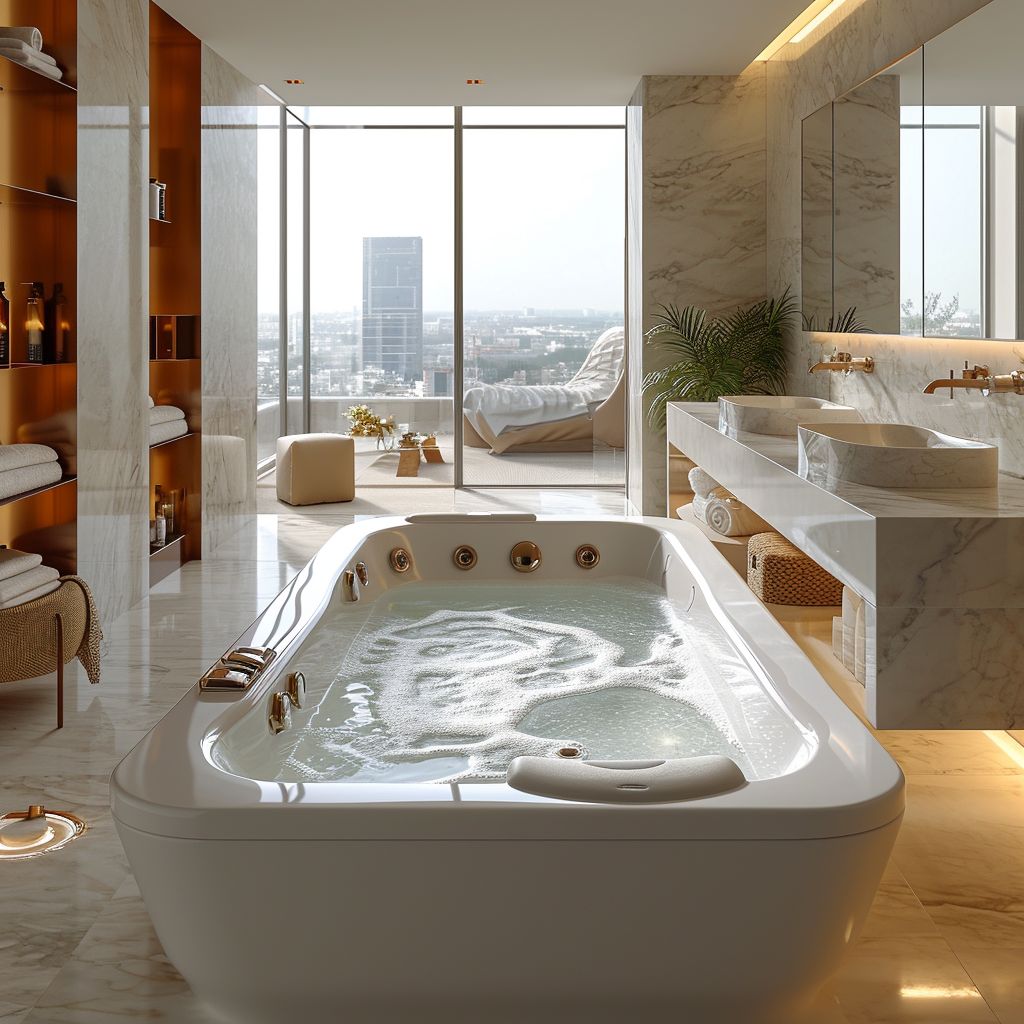
- Technological advancements have also made their mark on this trend. Smart technology, such as digital temperature control for showers and automated mood lighting, allows for a personalized experience. High-quality sound systems and waterproof televisions are becoming more common, enabling relaxation through music or entertainment.
- Additionally, the inclusion of wellness-focused features like sauna and steam rooms in home bathrooms marks a significant shift. Once exclusive to luxury spas, these amenities are now being integrated into residential designs, providing health benefits such as improved circulation and detoxification.
Smart Bathroom Technology
- The integration of smart technology in bathrooms signifies a remarkable shift towards enhanced comfort and convenience, marking a new era in home design. This trend is not merely about adding technology for its own sake, but rather about enhancing the functionality, efficiency, and enjoyment of bathroom spaces. As we embrace the digital age, bathrooms are evolving into high-tech havens that cater to our personal needs and preferences.
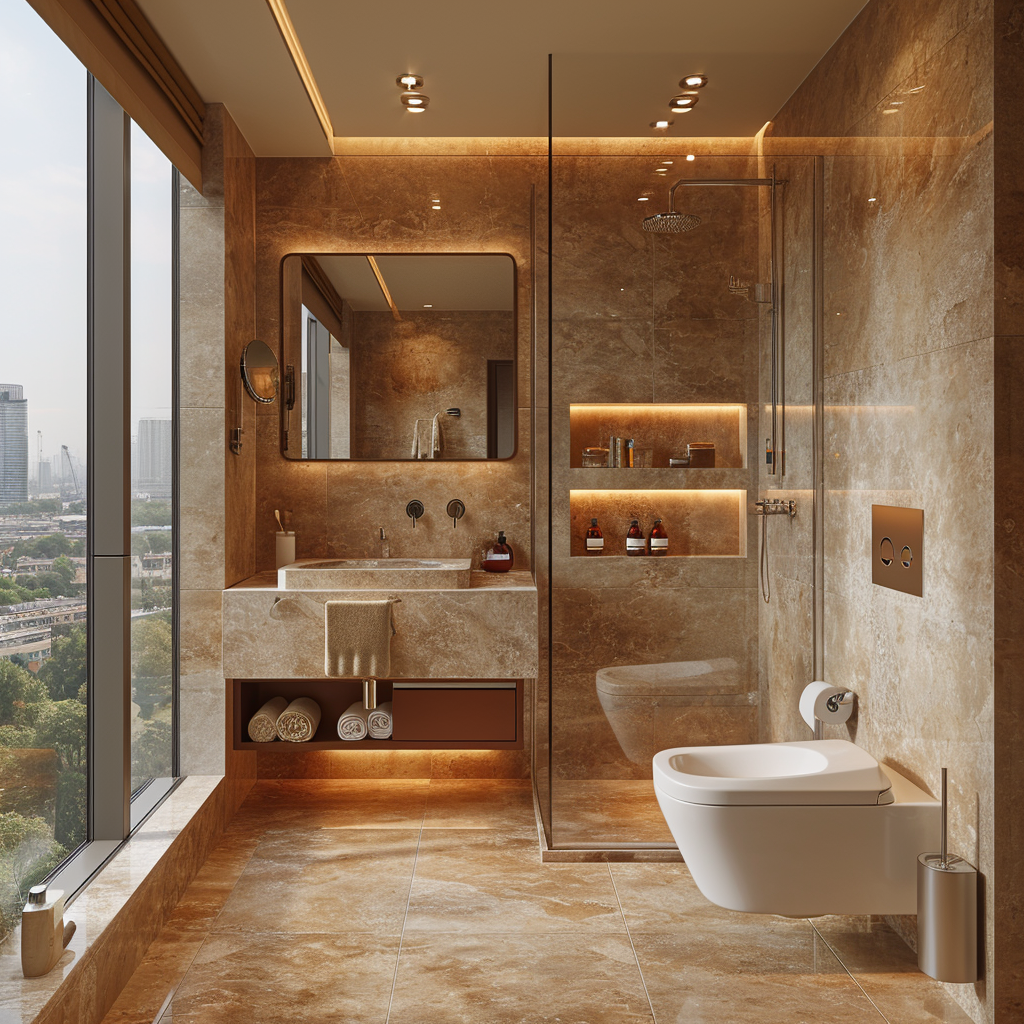
- One of the most notable aspects of smart bathroom technology is the emphasis on personalized experiences. Smart showers, for instance, allow users to precisely control water temperature and flow with voice commands or mobile apps, offering a tailor-made shower experience. Imagine stepping into a shower that automatically adjusts to your preferred temperature and pressure, or one that plays your favorite music through integrated sound systems.
- Intelligent toilets are another key feature in modern bathrooms. Equipped with features like automatic lids, self-cleaning functions, heated seats, and built-in bidets, these toilets offer a new level of hygiene and comfort. Some even come with health-monitoring capabilities, analyzing waste to provide insights into the user's well-being.
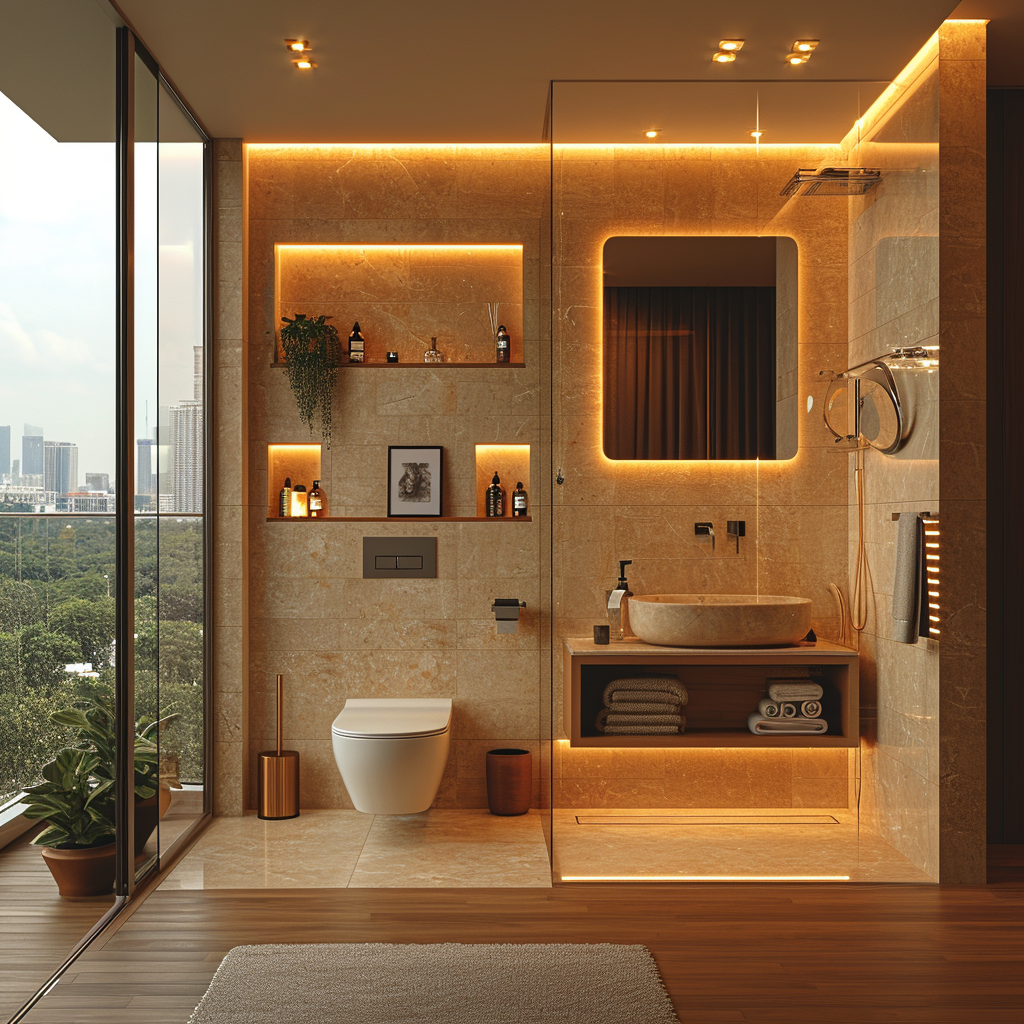
- Smart mirrors are transforming the way we interact with our reflection. These mirrors can display weather updates, news, or even connect to your smart home system to control lighting and temperature. With built-in LED lighting and anti-fog technology, they ensure optimal visibility and convenience.
- The incorporation of smart sensors is also enhancing bathroom safety and efficiency. Motion sensors for lighting and faucets help conserve energy and water, while humidity sensors can activate fans or dehumidifiers to maintain a comfortable environment and prevent mold growth.
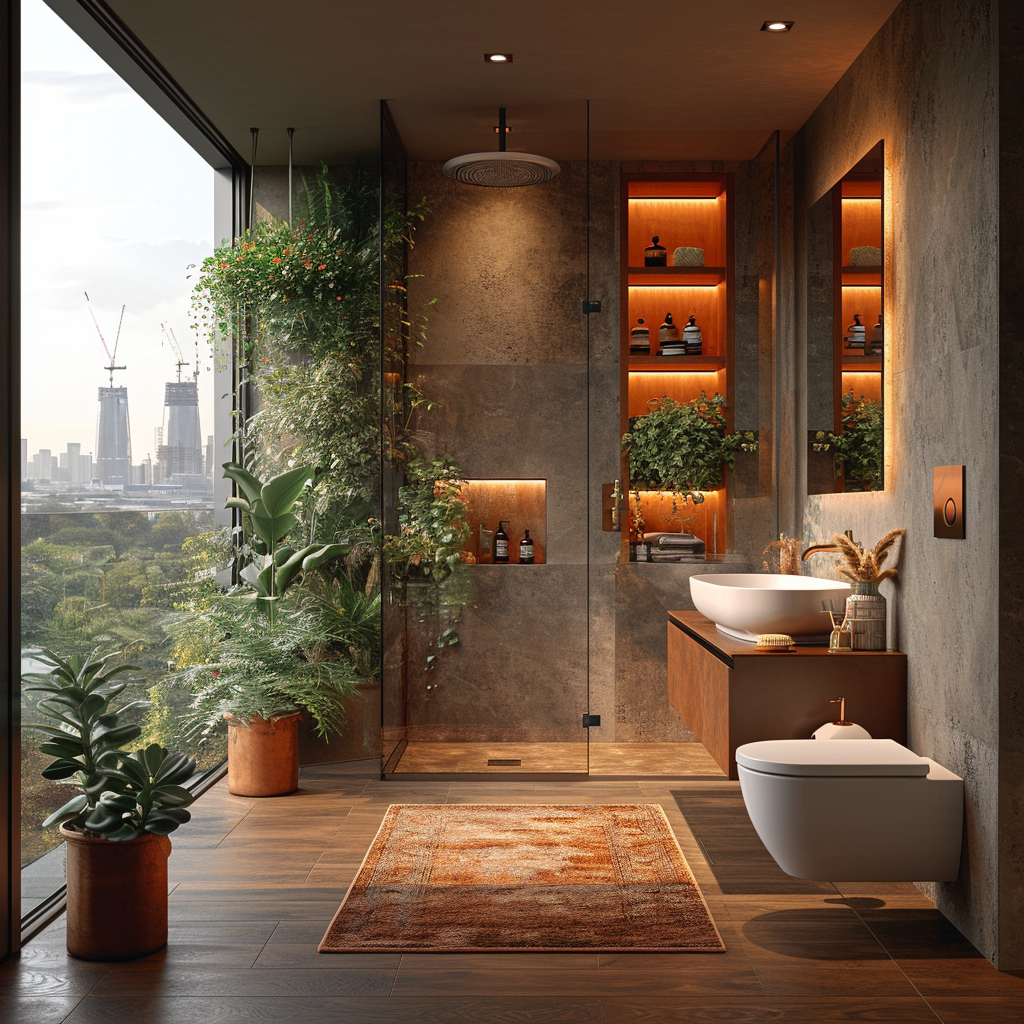
- Moreover, smart technology is making bathrooms more accessible for people with disabilities or mobility issues. Voice-activated controls and customizable settings make it easier for everyone to use bathroom facilities independently and safely.
Bold and Expressive Color Schemes
- The shift towards bold and expressive color schemes in bathroom interiors marks a vibrant departure from the traditionally neutral and subdued palettes that have long dominated bathroom design. This trend reflects a broader movement in interior design towards personal expression and fearlessness in color choices, infusing bathrooms with energy, personality, and a sense of daring. As homeowners and designers become more adventurous, bathrooms are transforming into canvases for artistic expression, challenging the norms and embracing a richer, more dynamic aesthetic.

- Gone are the days when bathrooms were simply functional spaces with little attention to color. Now, rich hues like deep blues, vibrant greens, and even daring shades like burnt orange or magenta are making their way onto bathroom walls, tiles, and fixtures. These colors bring a depth and intensity to the space, creating an immersive experience that can influence mood and perception. A bold-colored wall, for instance, can serve as a stunning backdrop to a minimalist bathroom, adding a dramatic flair without overwhelming the senses.
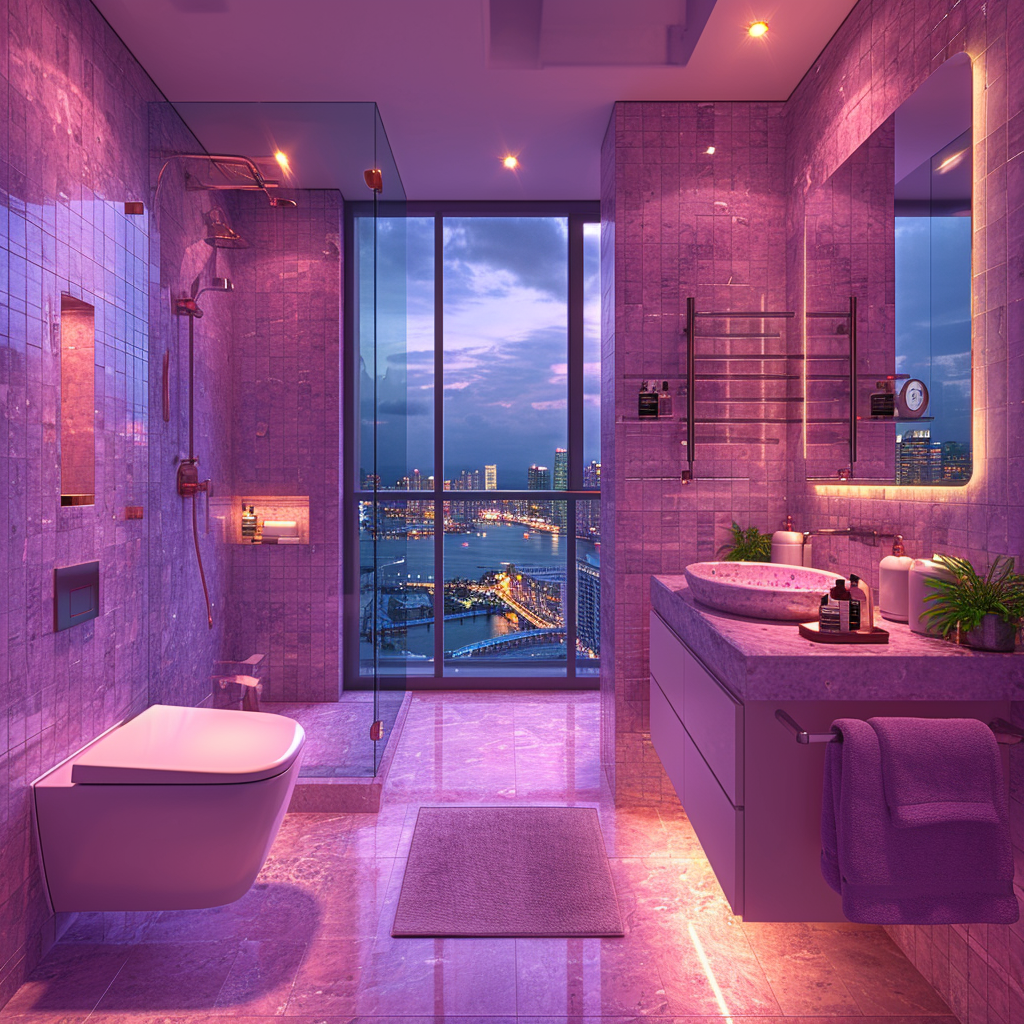
- This trend also sees a playful mix of patterns and textures, combining different shades and tones to create a visually captivating space. Geometric tiles, colorful wallpaper, and mixed materials are being used to add layers of interest and complexity. This approach allows for a personalized space that can be as eclectic or as harmonious as desired.
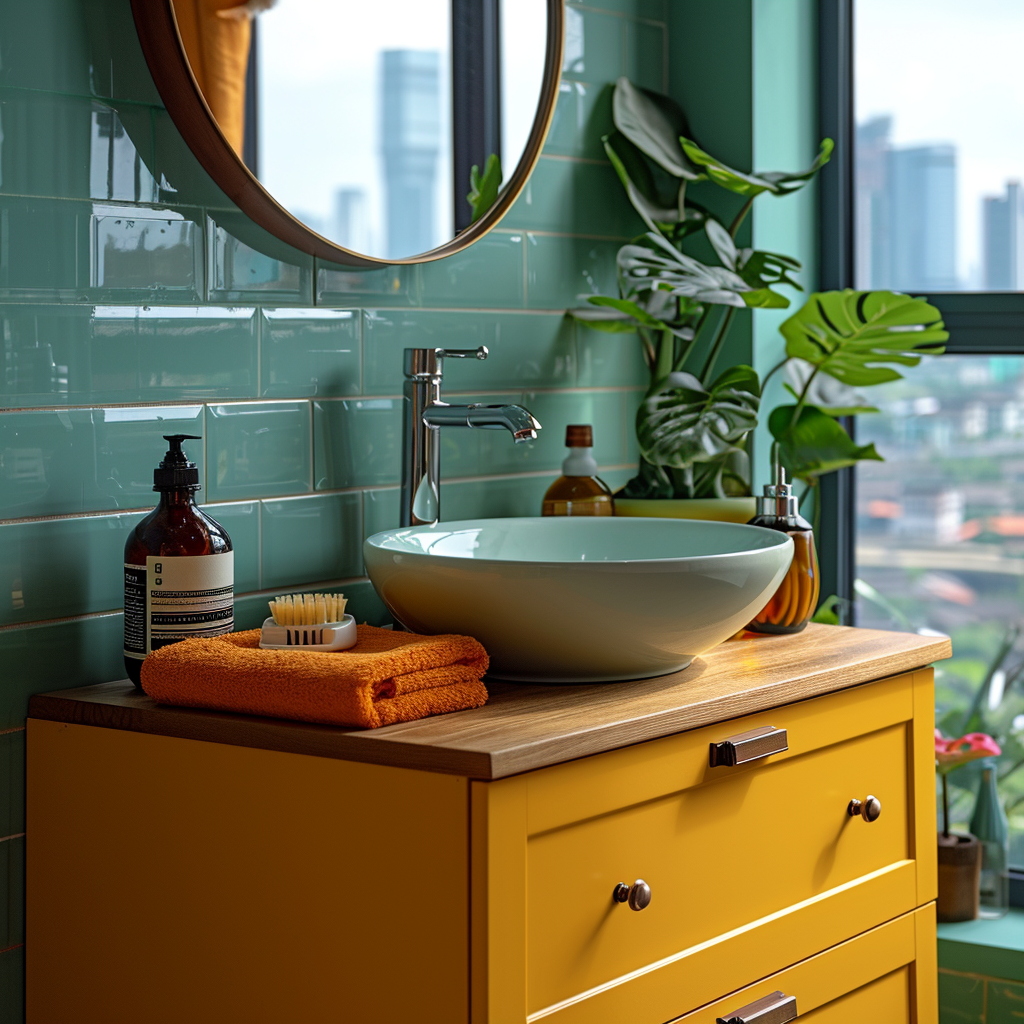
- Moreover, the use of color is not just about aesthetics; it's about creating an emotional resonance. A bathroom with warm, earthy tones can evoke a sense of comfort and grounding, while a space with cooler, bolder hues might feel refreshing and invigorating. This emotional connection transforms the bathroom from a purely functional area into a personal retreat, a space where one can rejuvenate and express their unique style.
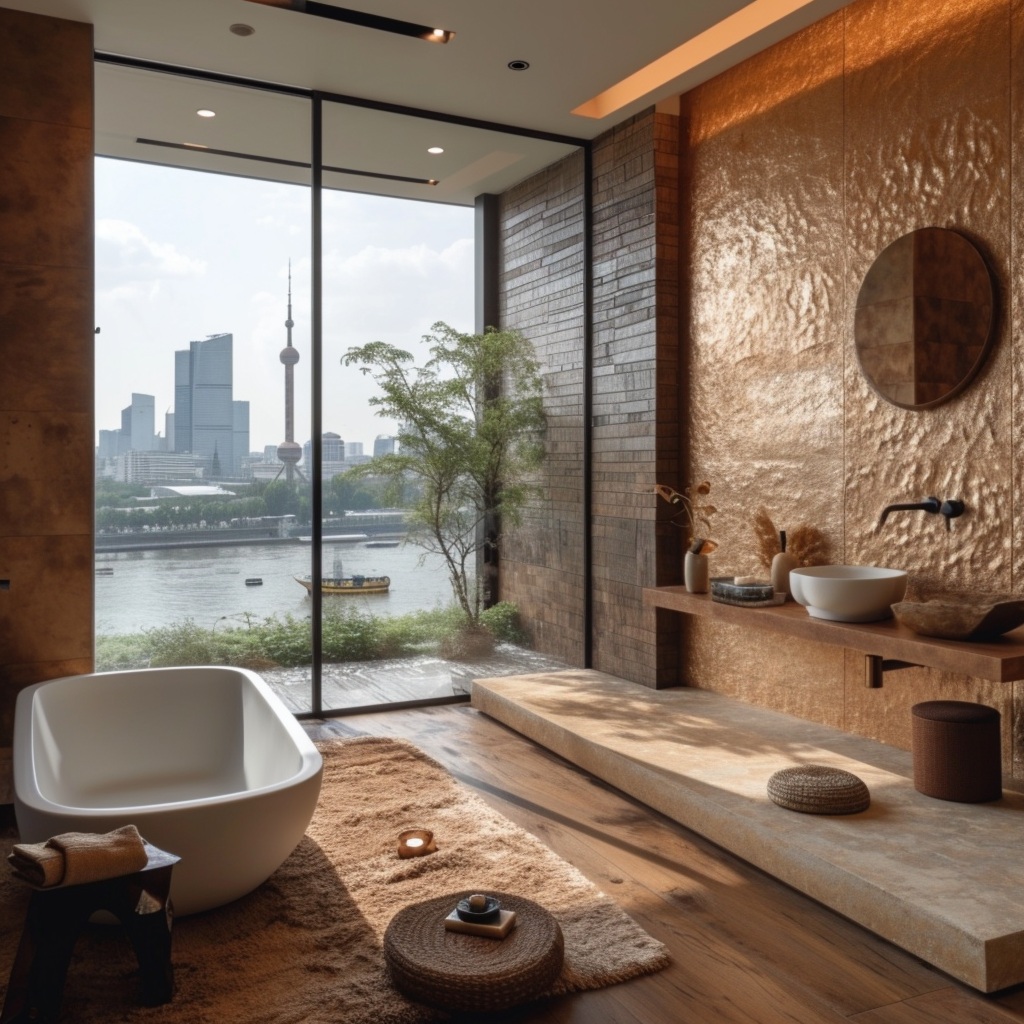
Innovative Storage Solutions
- The need for innovative storage solutions in bathroom designs has become increasingly important in our quest for organized, functional, and aesthetically pleasing living spaces. In the realm of bathroom design, storage is not just a practical necessity; it's a crucial component that significantly impacts the usability and enjoyment of the space. As bathrooms evolve beyond their traditional roles, becoming spaces for relaxation and self-care, the demand for smarter, more efficient storage solutions is growing.
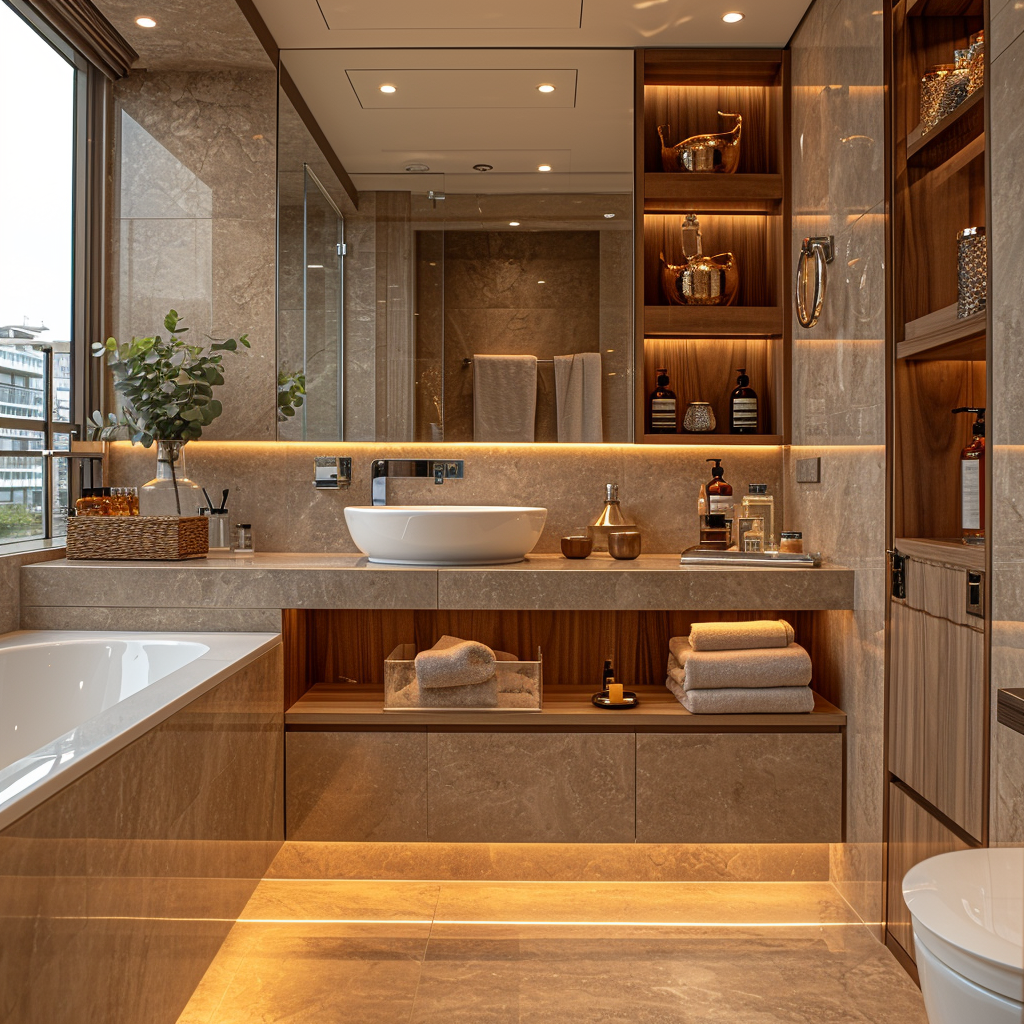
- One of the primary challenges in bathroom storage is maximizing space without compromising on style. Many modern bathrooms, especially in urban homes, are limited in size, necessitating creative solutions to make the most of every inch. This has led to the rise of innovative designs like floating vanities, wall-mounted cabinets, and recessed shelves. These solutions not only save floor space, making the bathroom appear larger and more open, but also contribute to a sleek, modern aesthetic.
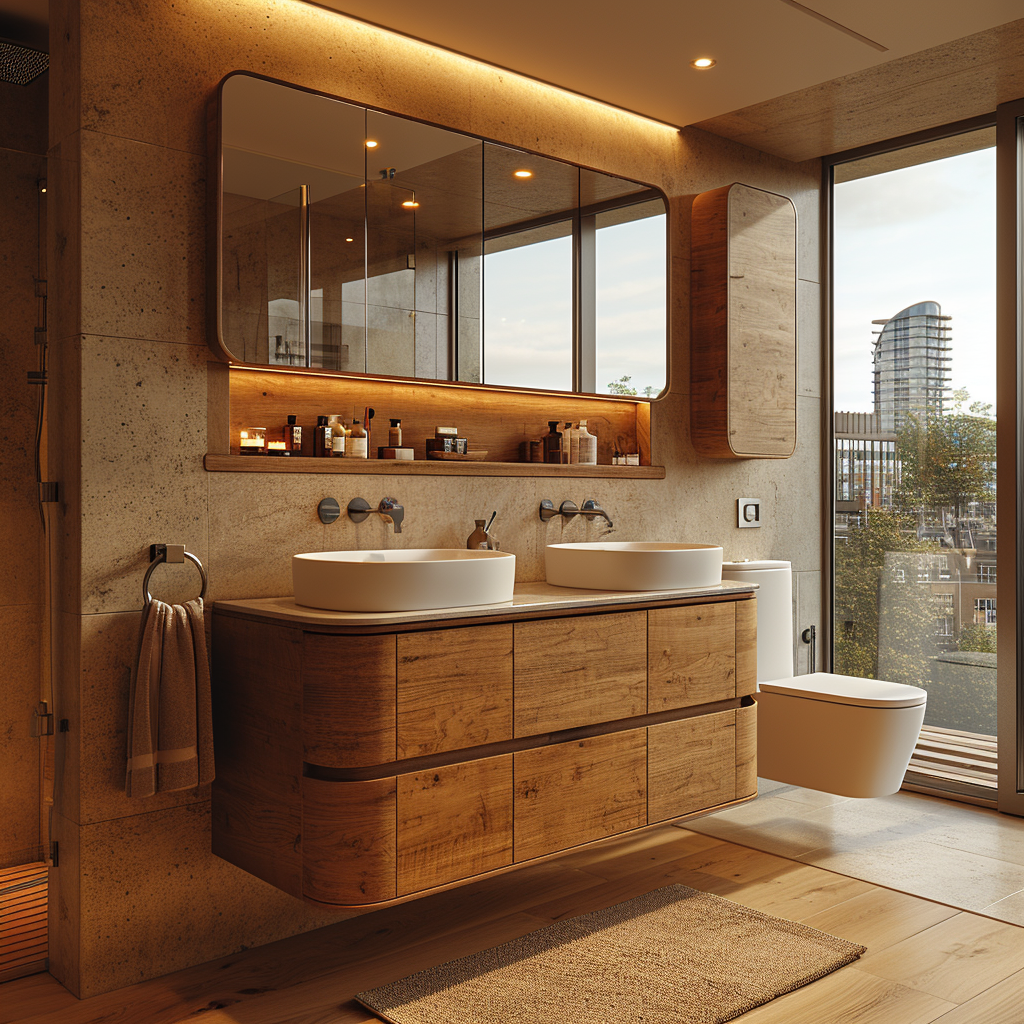
- Another aspect is the need for customizable storage that can adapt to individual requirements. Modular storage systems, adjustable shelving, and pull-out baskets offer flexibility, allowing users to tailor their storage spaces to fit their specific needs. Whether it's accommodating large bottles of shampoos, stacks of towels, or smaller cosmetic items, the ability to adjust and personalize storage is key.

- The integration of hidden storage is also a significant trend. Concealed cabinets, under-sink drawers, and in-mirror storage help maintain a clutter-free environment, essential for creating a serene and tranquil bathroom atmosphere. These hidden storage options keep necessities within reach but out of sight, contributing to a tidy and harmonious space.
- Moreover, innovative storage solutions in bathroom design also consider the need for accessibility and ergonomics. Pull-down shelves, drawer dividers, and easy-reach compartments are designed to make usage comfortable and effortless, especially important in homes with seniors or individuals with mobility challenges.
Natural Elements and Biophilic Design
Highlight the trend of incorporating natural elements and biophilic design in bathrooms.
Discuss how Hestya’s designs integrate natural materials and elements to bring a sense of the outdoors into bathroom spaces.
Statement Pieces and Artistic Flair
- The trend of incorporating natural elements and biophilic design in bathrooms is a refreshing evolution in interior design, highlighting our innate connection to nature and its positive impact on our wellbeing. Biophilic design, which focuses on integrating natural elements into built environments, has gained significant traction in recent years, and the bathroom, a space often associated with rejuvenation and relaxation, has become a prime canvas for this approach. This trend not only enhances the aesthetic appeal of bathrooms but also promotes a sense of tranquility and a healthier living environment.
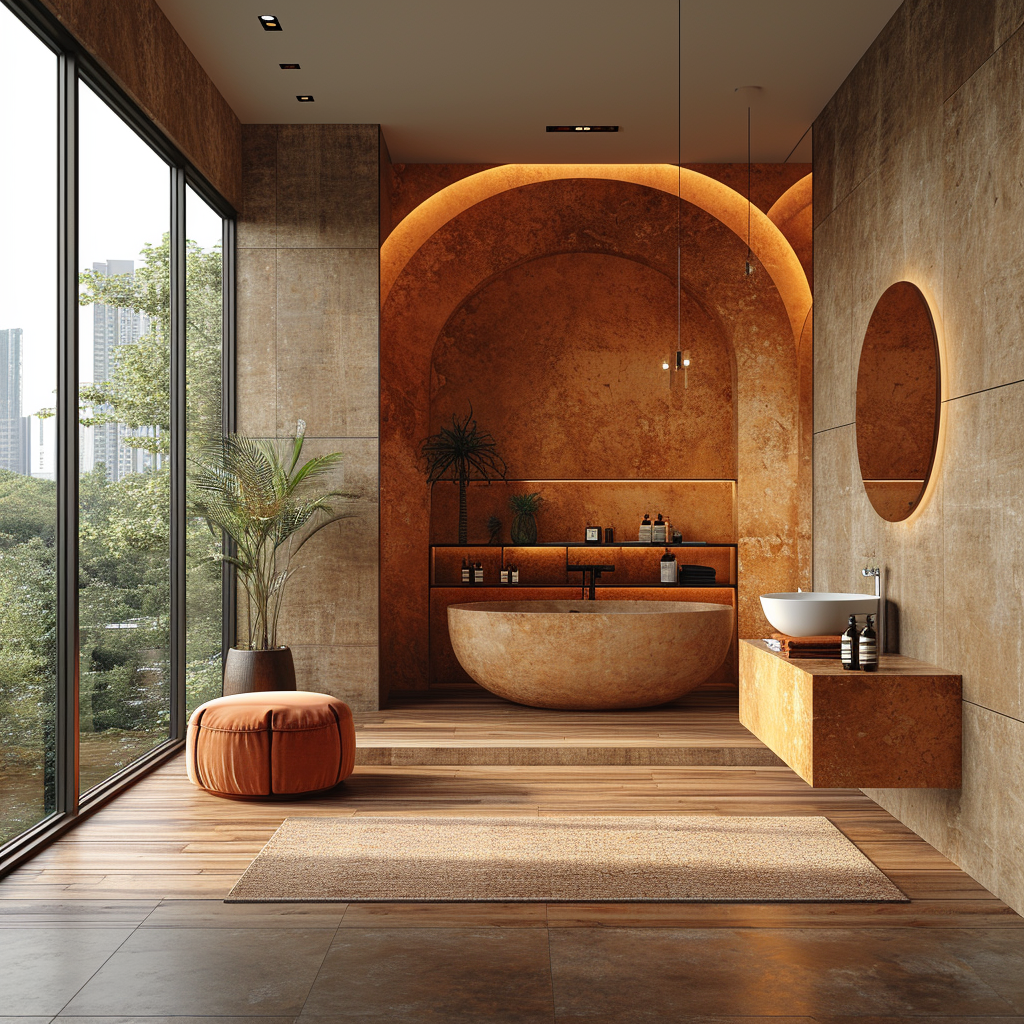
- Incorporating natural materials is a key aspect of this trend. The use of wood, stone, and bamboo in bathroom designs brings an organic warmth and texture that synthetic materials cannot match. These elements create a calming, earthy ambiance, reminiscent of serene natural landscapes. From wooden vanity units and stone basins to bamboo accessories, the textures and colors of these materials contribute to a space that feels grounded and connected to the natural world.
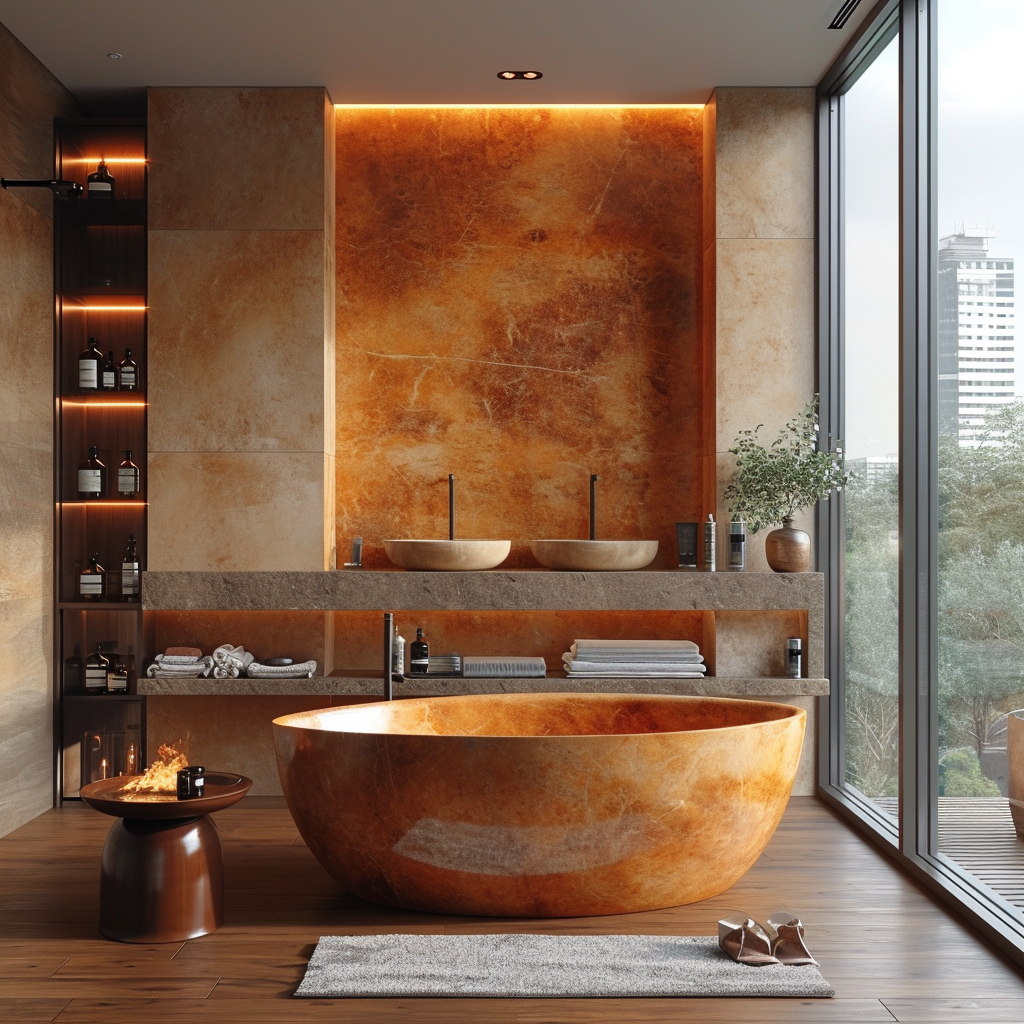
- The integration of plants is another essential component of biophilic bathroom design. Whether it’s a lush green wall, hanging planters, or potted plants, greenery not only purifies the air but also adds vibrancy and life to the space. Plants have been shown to reduce stress and improve mood, making them perfect additions to a space dedicated to relaxation and self-care.
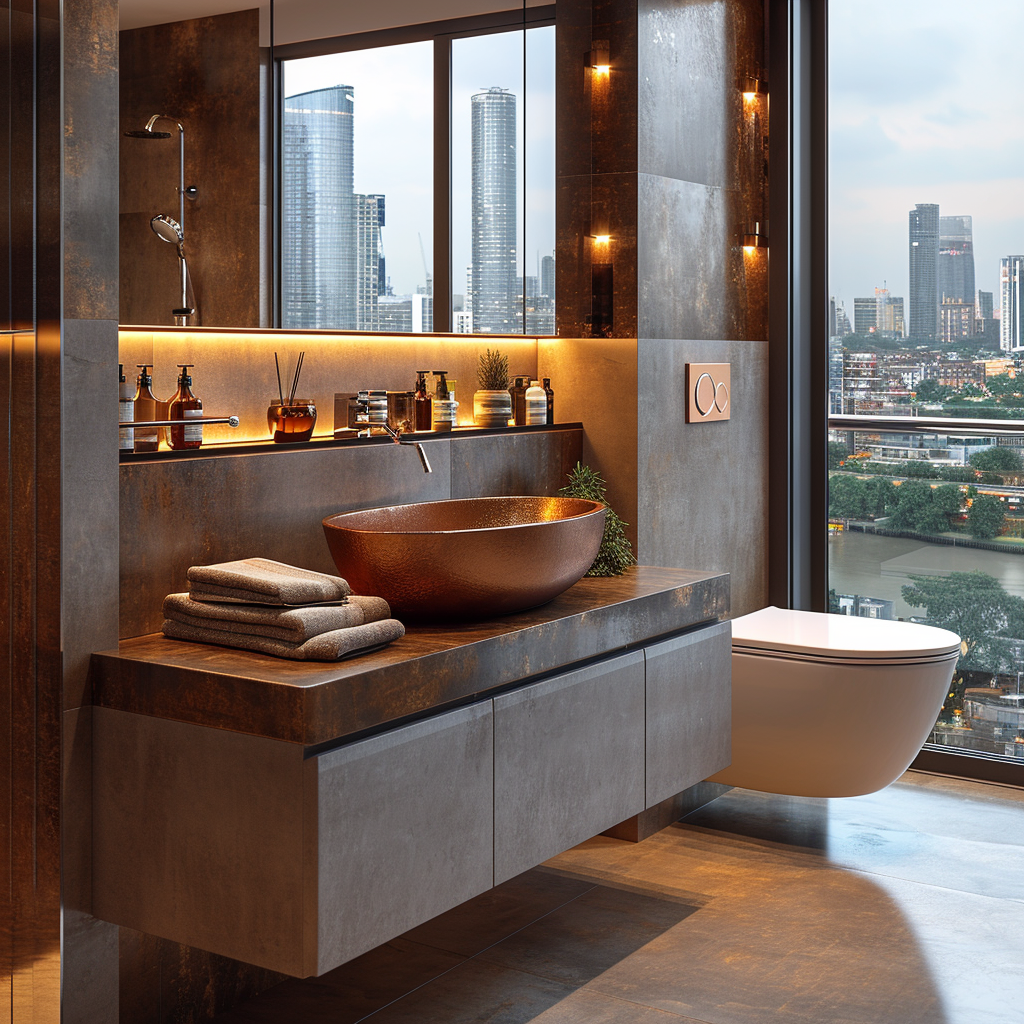
- Maximizing natural light is also a critical element. Skylights and large windows that allow for an abundance of daylight not only reduce the need for artificial lighting but also help maintain a connection with the outdoor environment. The interplay of light and shadow, the changing hues throughout the day, and the visual connection to the sky and outdoors enhance the sensory experience of the bathroom.
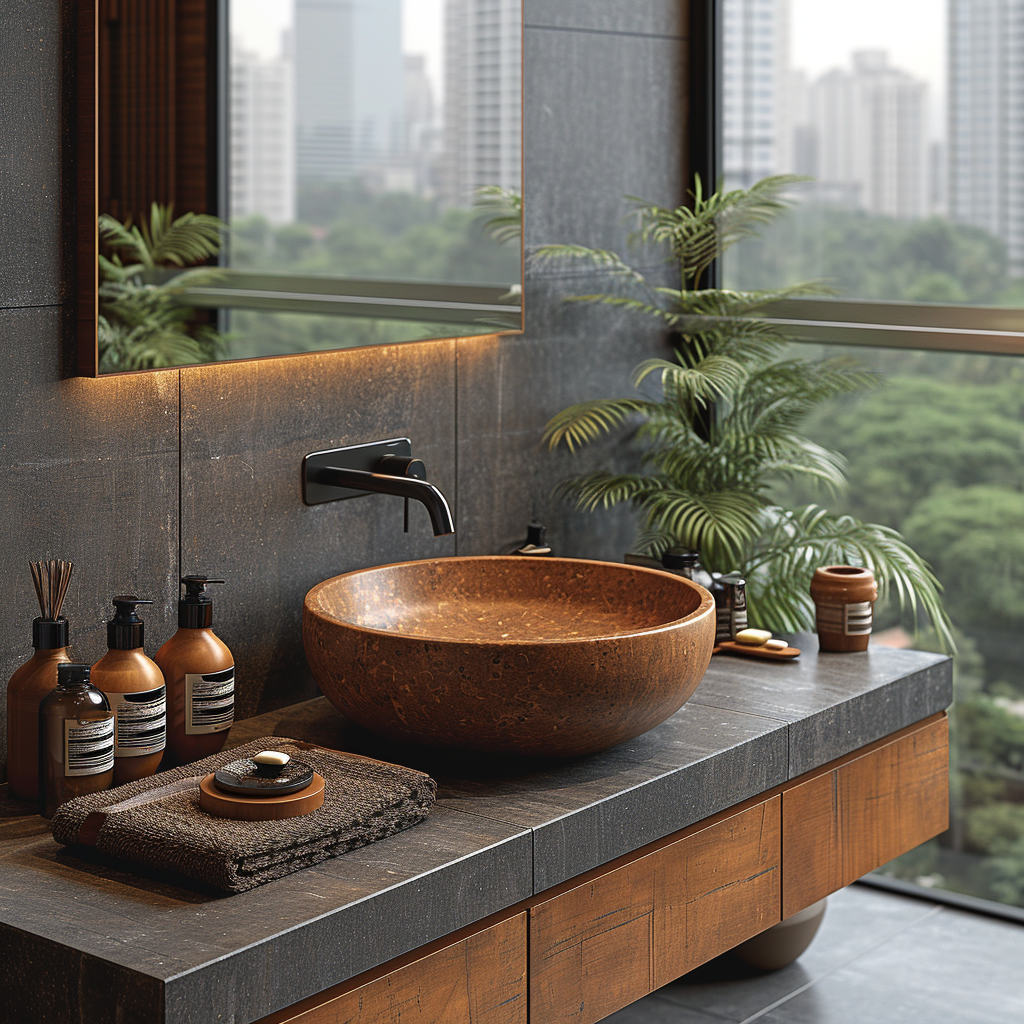
- Moreover, incorporating water elements like miniature waterfalls or fountains can create a soothing soundscape, further enhancing the spa-like atmosphere of the bathroom. This auditory connection to nature adds another layer of relaxation and serenity to the space.
Textural Diversity
- The importance of textural diversity in creating tactile and visually interesting bathrooms is an aspect of interior design that's gaining increasing recognition. In the realm of bathroom aesthetics, texture plays a pivotal role in enhancing the sensory experience and elevating the overall design. It's not just about the visual appeal; texture adds depth and dimension, creating an environment that's engaging both to the touch and the eye. This emphasis on varied textures reflects a deeper understanding of how tactile experiences can influence our perception and enjoyment of a space.
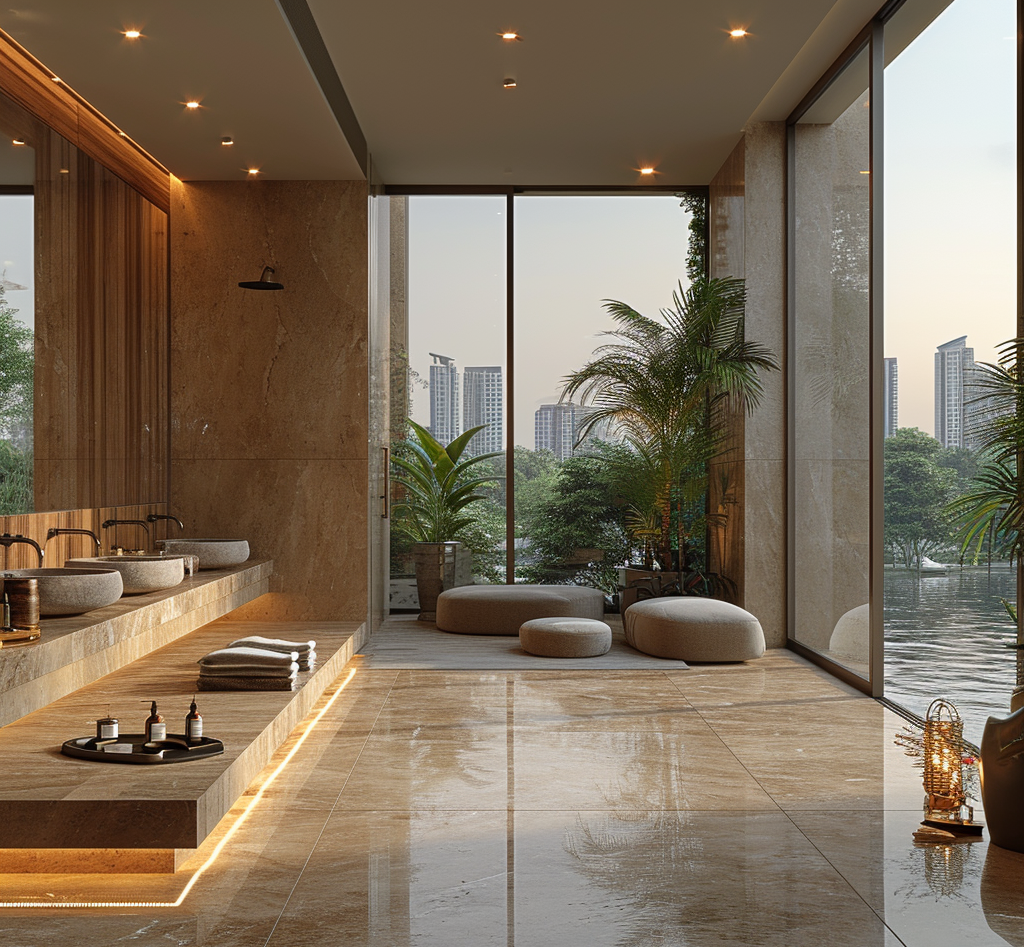
- Introducing a variety of textures in bathroom designs can transform a flat and monochromatic space into one that's rich and inviting. Different textures, whether rough, smooth, glossy, or matte, interact with light and shadow in unique ways, adding complexity and character. For instance, the roughness of natural stone or the grain of wood can contrast beautifully with the smoothness of polished tiles or the sleekness of modern fixtures. This interplay of textures creates a dynamic and layered look, enhancing the overall aesthetic appeal.
- Textural diversity is not limited to surfaces and materials. It also extends to textiles and accessories. Plush towels, woven baskets, and soft bath mats introduce softness and warmth, balancing harder materials like glass and metal typically found in bathrooms. These elements not only serve practical purposes but also contribute to a cozy and welcoming atmosphere.
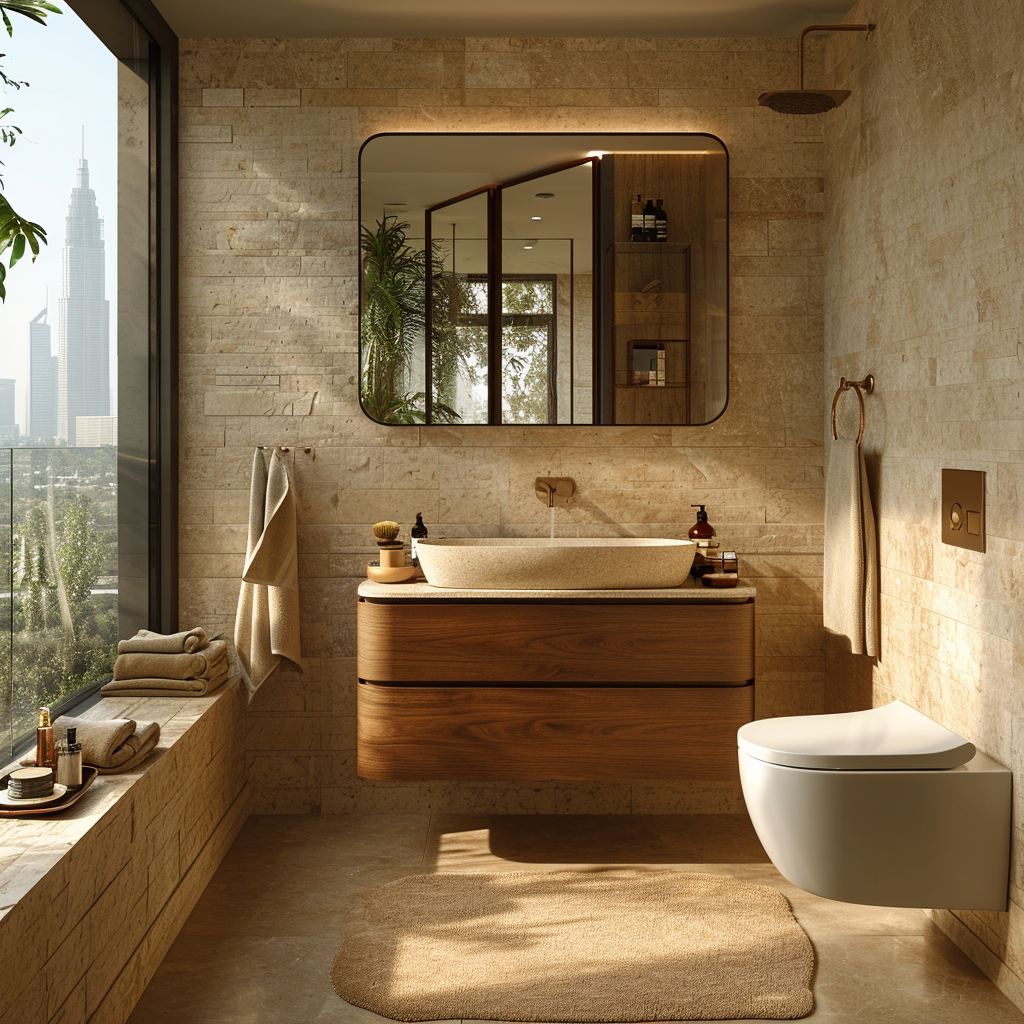
- Moreover, textural variety can have a practical aspect in terms of safety and functionality. Non-slip textures in flooring are essential for preventing accidents in wet areas. Textured handles and surfaces can provide better grip, making the bathroom more accessible, especially for children and the elderly.
Conclusion
The bathroom trends of 2024 are a reflection of our evolving lifestyle needs and preferences. They underscore a move towards creating spaces that are comfortable, functional, and deeply personal. These trends are not just about aesthetic appeal; they represent a deeper understanding of the role our living environments play in our overall well-being and happiness. As we continue to navigate the dynamics of modern living, these trends offer insights into how we can create spaces that truly resonate with our individual needs and aspirations.